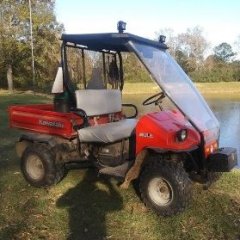Mule 3000 Water Pump Removal Made Easy
-
Similar Topics
-
By Sisco
Does any have a part number for the fuel pump sock for a 2016 challenger 700 efi. Does not show on any parts diagram but the old pump has one on it.
-
By Mnfish
I have a 2016 Cub Cadet 750 Challenger Crew. My in tank fuel pump is inoperative. Can I put in an external inline electric fuel pump to replace the intank one? The inline ones are about $350. An inline electric one is about $25. Both are easy to replace just really expensive for the intank one. Any kind of inline external pump I should look at? What PSI is needed? Thanks for any help
-
By runyan825
I know the hisun parts are not very solid and they seem to be Rhino clones to some extent. I'm trying to find better quality replacement parts than the ones that are "OEM"....
Sent from my SM-S928U using Tapatalk
-
By doncaron
Hello
I have a 2022 Massimo t-boss 550. I’m looking for a fix for my timing problem. It keeps getting out of timing. Now I’m trying to find the proper parts for the linhai motor. I’m looking for tensioner chain and gear. If there’s anything else I can do to fix this issue please let me know. Unfortunately I can’t afford to get something better so I got to get it fixed. Thanks in advance.
Don
-
By Travis
Many people have issues with the kawasaki FJ400 engine fouling out spark plugs, after working on a few FJ engines and 600 series Mule's with this issue, i can say the fix for this issue is using a slightly hotter spark plug... the factory recommends a BPR6ES NGK plug.... the Number in NGK plugs represents its heat range and somewhat odd, the lower the number the hotter the plug, at least as far as NGK is concerned. If you have a Mule fouling spark plugs try installing a NGK BPR4ES spark plug.
FROM NGK
A hotter heat range spark plug has an insulator design with a longer heat flow path to the metal shell of the plug. As a result, more heat stays in the ceramic firing end and less is dissipated to the engine. A colder heat range spark plug has an insulator design with a shorter heat flow path to the metal shell of the plug. As a result, less heat stays in the ceramic firing end and more is dissipated to the engine. For a spark plug to function properly, it must have a tip temperature high enough to burn off carbon deposits (self-cleaning) and avoid fouling, while remaining low enough to avoid overheating the ceramic firing end and pre-ignition.
-







Recommended Posts
Join the conversation
You can post now and register later. If you have an account, sign in now to post with your account.
Note: Your post will require moderator approval before it will be visible.